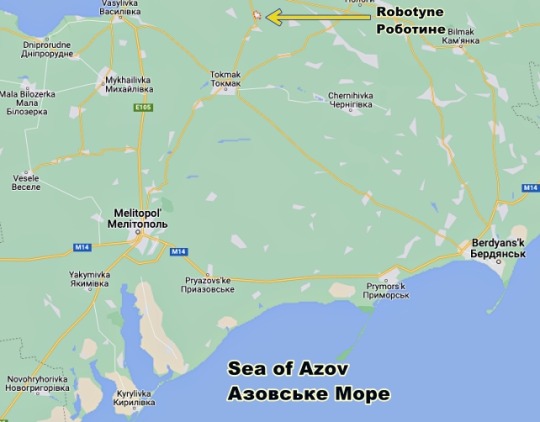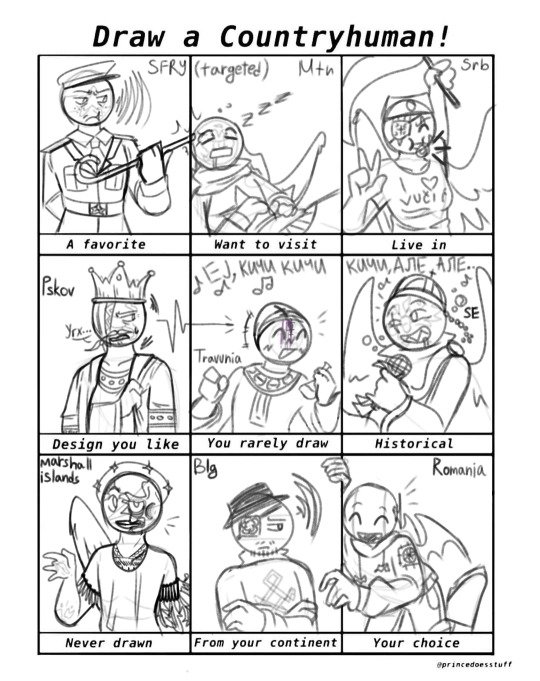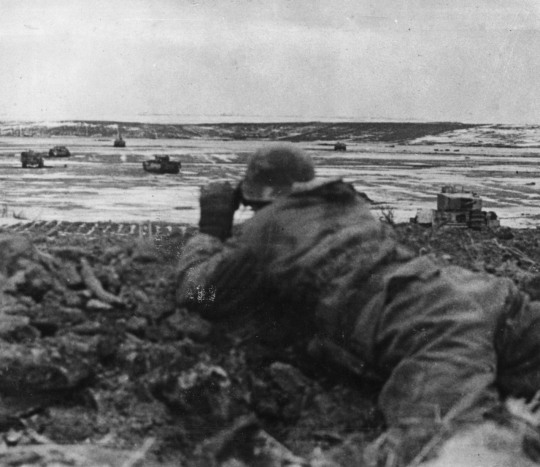#pskov oblast
Explore tagged Tumblr posts
Text




Pskov (2) (3) (4) by Inna
Via Flickr:
(1) Interior space of the Izborsk fortress from Lukovka tower
19 notes
·
View notes
Text
Sofya Vasilyevna Kovalevskaya (born January 15, 1850, Moscow, Russia—died February 10, 1891, Stockholm, Sweden) was a mathematician and writer who made a valuable contribution to the theory of partial differential equations. She was the first woman in modern Europe to gain a doctorate in mathematics, the first to join the editorial board of a scientific journal, and the first to be appointed professor of mathematics.
In 1868 Kovalevskaya entered into a marriage of convenience with a young paleontologist, Vladimir Kovalevsky, in order to leave Russia and continue her studies. The pair traveled together to Austria and then to Germany, where in 1869 she studied at the University of Heidelberg under the mathematicians Leo Königsberger and Paul du Bois-Reymond and the physicist Hermann von Helmholtz. The following year she moved to Berlin, where, having been refused admission to the university on account of her gender, she studied privately with the mathematician Karl Weierstrass. In 1874 she presented three papers—on partial differential equations, on Saturn’s rings, and on elliptic integrals—to the University of Göttingen as her doctoral dissertation and was awarded the degree, summa cum laude, in absentia. Her paper on partial differential equations, the most important of the three papers, won her valuable recognition within the European mathematical community. It contains what is now commonly known as the Cauchy-Kovalevskaya theorem, which gives conditions for the existence of solutions to a certain class of partial differential equations. Having gained her degree, she returned to Russia, where her daughter was born in 1878. She separated permanently from her husband in 1881.
In 1883 Kovalevskaya accepted Magnus Mittag-Leffler’s invitation to become a lecturer in mathematics at the University of Stockholm. She was promoted to full professor in 1889. In 1884 she joined the editorial board of the mathematical journal Acta Mathematica, and in 1888 she became the first woman to be elected a corresponding member of the Russian Academy of Sciences. In 1888 she was awarded the Prix Bordin of the French Academy of Sciences for a paper on the rotation of a solid body around a fixed point.
Kovalevskaya also gained a reputation as a writer, an advocate of women’s rights, and a champion of radical political causes. She composed novels, plays, and essays, including the autobiographical Memories of Childhood (1890) and The Nihilist Woman (1892), a depiction of her life in Russia.


Memorial Museum-Estate of Sofia Kovalevskaya, Polibino, Pskov Oblast
#studyblr#history#mathematics#education#academia#misogyny#russia#germany#sweden#france#pskov oblast#memorial museum-estate of sofya kovalevskaya#heidelberg university#humboldt university of berlin#university of göttingen#stockholm university#russian academy of sciences#french academy of sciences#sofya kovalevskaya#vladimir kovalevsky#leo königsberger#paul du bois-reymond#hermann von helmholtz#karl weierstrass#gösta mittag-leffler#acta mathematica#prix bordin#cauchy-kovalevskaya theorem#inspiration
27 notes
·
View notes
Text

Pskov tonight
#travelphotography#russia#travel#landscape#river#church#street#river pskova#pskova river#pskovskaya oblast'#pskov#pskova#mobilephotography#mobile photography#nighttime#night lights#nightscape#night city#night#cityview#old city#cityscape#city#samsung#galaxy
59 notes
·
View notes
Text
Members of the puppet government which Russia set up in the occupied city of Tokmak are apparently leaving as the Ukrainian military advanced to within 20 km of town.
That’s according to the information of locals reported by Ivan Fedorov, the mayor of Melitopol, which is the next occupied Ukrainian city in the area. “The occupiers are being smoked out of Tokmak. Almost daily explosions and the liberation of settlements in the Melitopol direction transform Tokmak, which is still occupied, to a completely front-line city,” Fedorov said. While the initial distance from the Russian-occupied city of Tokmak to the frontline was about 31 km, it is now less than 20 km as the Ukrainian army advanced, taking Robotyne and areas around it. The Ukrainian army has reached the second line of Russian defense in the area.
A few days ago Ukraine liberated the village of Robotyne. Ukraine's goal is to reach the Sea of Azov and thereby cut the Russian-occupied territories in two.
As was reported, following the liberation of Robotyne, Ukrainian troops are continuing their offensive in Melitopol direction in Zaporizhzhia Oblast, bypassing minefields and advancing towards the second line of defense of the Russian Army.

In other news, Ukrainian drones damaged four large Russian Il-76 transport planes in the city of Pskov near the border with Estonia.
Drone strike damages four Il-76 aircraft deep in Russian territory
#invasion of ukraine#counteroffensive#tokmak#robotyne#melitopol#sea of azov#zaporizhzhia oblast#russia#pskov#il-76#russia is losing the war#запорізька область#роботине#токмак#мелітополь#азовське море#псков#ил-76#россия проигрывает войну#владимир путин#путин хуйло#бей путина#союз постсоветских клептократических ватников#руки прочь от украины!#геть з україни#вторгнення оркостану в україну#україна переможе#крим це україна!#слава україні!#героям слава!
24 notes
·
View notes
Text

I hate these fuckers
#i heart Vučić#countryhumans#countryhumans yugoslavia#countryhumans montenegro#countryhumans Serbia#countryhumans Pskov oblast#countryhumans Travunia#countryhumans Serbian empire#countryhumans Marshall islands#countryhumans Bulgaria#countryhumans Romania
16 notes
·
View notes
Note
What are your favorite cities that you've traveled to?
St Peterbsurg hands down. Other than that, I really like Sochi (sea, mountains, Soviet-era neoclassical architecture), Samara (wide river Volga, an endless beach line, Art Nouveau architecture and so much history), Vyborg (European vibes, Northern nature, and the Alvar Aalto library). There's still a lot I haven't seen in Russia!
Some small towns I thoroughly enjoyed are Kolomna, Suzdal and Izborsk.
Kolomna is in Moscow oblast, lots of tourists these days. There's an ancient Kremlin and lots of small museums and shops and cafes. It had one of the nicest cafes I've ever visited, there are small tables scattered across the farden. I sat under a blossoming apple tree and had tea out of a porcelain cup. It was divine.
Suzdal is in Vladimir oblast, part of the Golden Ring. It's like you're back in the 15th century or something. There's nothing higher than 2 floors. There are dozens of churches. I was there a number of years ago, we rented a real wooden house. Our host supplied bliny for breakfast every day, and fresh crunchy cucumbers were in unlimited supply.
Izborsk is in Pskov oblast near the Estonian border. It has ruins of a 14th century stone fortress and some even earlier remains (dating back to the 7th century). (SEVENTH.) It also has many lovely museums and shops and cafes—all things that I love. :D
I want to explore more of those, I love the feeling that you went back in history!
134 notes
·
View notes
Text


denis and katya's graves together in pskov oblast, russia
22 notes
·
View notes
Text

Russian Federal Subject Flag Wars: Round 1
This tournament will focus on the flags of Russia’s 83 federal subjects, which includes 21 republics, 9 krais, 46 oblasts, 2 federal cities, 1 autonomous oblast, and 4 autonomous okrugs. It will not include the flags of the land stolen from Ukraine.
The tournament will be followed by the Regional Flag Wars, a huge competition featuring the flags of regions/administrative divisions, with only one flag per country. Over the past year, I’ve released numerous polls to decide which regional flag will be included for each country. Russia is the final country on the list, and it is receiving its own tournament due to having so many administrative divisions. I hope everyone enjoys this tournament and is looking forward to the Regional Flag Wars! The Russian Federal Subject Flag Wars will begin this week.
Round 1:
1. Tver Oblast vs. Amur Oblast vs. Jewish Autonomous Oblast vs. Kamchatka Krai vs. Karelia
2. Yamalo-Nenets Autonomous Okrug vs. Bashkortostan vs. Tambov Oblast vs. Udmurtia vs. Kursk Oblast
3. Samara Oblast vs. Pskov Oblast vs. Adygea vs. Chukotka Autonomous Okrug vs. Khakassia
4. Khabarovsk Krai vs. Kalmykia vs. Altai Krai vs. Zabaykalsky Krai vs. Mordovia
5. Moscow Oblast vs. Dagestan vs. North Ossetia–Alania vs. St. Petersburg vs. Saratov Oblast
6. Primorsky Krai vs. Yaroslavl Oblast vs. Leningrad Oblast vs. Astrakhan Oblast vs. Komi Republic
7. Krasnoyarsk Krai vs. Irkutsk Oblast vs. Omsk Oblast vs. Lipetsk Oblast vs. Kabardino-Balkaria
8. Moscow vs. Ingushetia vs. Kostroma Oblast vs. Khanty-Mansi Autonomous Okrug vs. Tomsk Oblast
9. Perm Krai vs. Orenburg Oblast vs. Stavropol Krai vs. Volgograd Oblast vs. Belgorod Oblast
10. Mari El vs. Kaliningrad Oblast vs. Sverdlovsk Oblast vs. Sakha vs. Arkhangelsk Oblast
11. Krasnodar Krai vs. Penza Oblast vs. Buryatia vs. Nizhny Novgorod Oblast vs. Kurgan Oblast
12. Chelyabinsk Oblast vs. Nenets Autonomous Okrug vs. Karachay-Cherkessia vs. Murmansk Oblast vs. Altai Republic
13. Novosibirsk Oblast vs. Tuva vs. Vologda Oblast vs. Smolensk Oblast vs. Novgorod Oblast
14. Tatarstan vs. Sakhalin Oblast vs. Ulyanovsk Oblast vs. Ryazan Oblast vs. Chechnya vs. Tyumen Oblast
15. Ivanovo Oblast vs. Chuvashia vs. Vladimir Oblast vs. Rostov Oblast vs. Magadan Oblast vs. Bryansk Oblast
16. Kaluga Oblast vs. Kemerovo Oblast vs. Oryol Oblast vs. Kirov Oblast vs. Voronezh Oblast vs. Tula Oblast
16 notes
·
View notes
Text

Destroyed vehicles of the Russian 36th Guards Heavy Tank Regiment in Pskov oblast, March 1944
from here
19 notes
·
View notes
Text
Two Russian officers were killed in a Ukrainian attack on an army headquarters in the Kursk region in a Storm Shadow missile strike, it has been reported.
Russian Telegram channels said that the two lieutenant colonels died on December 30 following Ukraine's attack on a bunker in Lgov.
Newsweek has contacted the Russian and Ukrainian defense ministries for comment by email.
Why it matters
As well as delivering a blow to Russia's military by killing officers, the reported use of a Storm Shadow shows Kyiv's determination to make gains in Russia's Kursk region where it has launched another offensive following weeks of losing ground.
What to know
In November, the U.S. allowed Ukraine to use its longer-range weapons such as ATACMS inside Russian territory. The same month, Kyiv reportedly launched a British-French Storm Shadow missile which can penetrate hardened bunkers.
Lieutenant colonels from Russia's 76th Pskov Division of the Russian Airborne Forces, Valery Tereshchenko and Pavel Maletsky were killed in the Ukrainian missile strike on the Russian military HQ on December 30, it was reported.
Video on the Telegram channel Russia No Context purported to show the aftermath of the impact where flames are blazing and a voice saying, "the guys are all in the bunker, there are many people."
The death of Tereshchenko, chief of communications for the 76th Airborne Division, was confirmed by the Telegram channel the Officers' Hockey League.
An obituary on the channel said that Tereshchenko, who had fought in the war since October 2022 had died in the missile strike which killed a total of eight officers and injured 22 other personnel.
It announced a funeral scheduled for January 5, adding that "his path, full of courage, fearlessness and heroism, was cut short" and that "words are powerless."
Maletsky's death was confirmed on the social network VKontakte where one of the tributes described "my close friend and comrade."
Other Ukrainian strikes on Kursk using western-supplied missiles included a strike on a command post of Russia's 810th Naval Infantry Brigade in Belaya on Tuesday, according to Ukraine's General Staff which did not reveal casualties.
Ukrainian forces also reportedly used a HIMARS to strike a different 810th Naval Infantry Brigade command post near Lgov, Kursk Oblast, on December 25, killing the brigade's deputy commander and other staff officers.
What people are saying
Russian Officers' Ice Hockey League Telegram channel: "With sorrow in our hearts, we inform you that Guards Lieutenant Colonel of the Airborne Forces, Chief of Communications of the 76th Pskov Airborne Division, player of the OKO hockey club Valery Borisovich Tereshchenko died while performing his military duty."
A tribute on VKontakte to Pavel Maletsky said: "There is tragic news … my close friend and comrade, be a warrior—live forever."
What happens next
Ukraine has made some gains in Kursk since it launched a fresh offensive on Sunday following weeks of losing the territory it had captured in the early stages of its incursion that started on August 6, and there could be further Ukrainian strikes using western-supplied weapons in the coming weeks.
However, the Institute for the Study of War (ISW) said Tuesday that Russian forces had also regained positions in the region. Kursk will continue to be a key focus for Ukraine's forces as possible leverage in any peace negotiations with Moscow.
Backup link
4 notes
·
View notes
Text

Russia is trying to protect its bombers with car tires
Fernando Valduga By Fernando Valduga 03/09/2023 - 17:22 in Military, War Zones
New satellite images suggest that Russia is trying to protect its Tu-95 bombers from Engels Air Base in Saratov Oblast with car tires.
The images, taken on the first day of September, show that Russian forces covered the wing and the central part of the aircraft with tires, according to military blogger Tatarigami_UA.
These tires are strategically positioned along the entire length of both wings and a small segment of the upper part of the fuselage, providing a supposed defense mechanism against potential drone attacks.
"Get ready, because the Russians have once again demonstrated an incomparable innovation. What you are seeing is a satellite image of a TU-95 strategic bomber covered with car tires. According to them, this should protect strategic bombers from drones."

"This doesn't seem to be just a single occurrence. In the satellite images, it seems that the Russians are still in the process of installing tires in the bomber - a new and economical version of the ERA replacement for the Russian air force?" said the blogger.
The idea is that the tires absorb the impact of a drone, preventing it from causing significant damage to the aircraft. The tires are made of rubber, a highly elastic material. When a drone collides with the tires, the rubber will absorb the energy of the impact and deform, reducing the force that is transferred to the aircraft. This can help prevent damage to the wings and other critical components of the plane.

However, it is important to note that this is not an infallible defense against drone attacks. The effectiveness of the tires will depend on several factors, including the size and speed of the drone, as well as the angle and location of the impact. In addition, there is a risk of the tires catching fire or exploding with the impact, which may pose a danger to the aircraft and the crew.

Satellite image of Engels Air Base, with Tu-95 and Tu-160 bombers. (Photo: Maxar Technologies)
Engels Air Base, located about 400 km southeast of Moscow and about 700 km from the border with Ukraine, operates the strategic bombers Tu-160M Blackjack and Tu-95M Bear of the Russian Aerospace Forces. The airfield was used to launch many of the Moscow air strikes with Kh-101 cruise missiles in the past: at certain times, up to 8 Tu-95 and 4 Tu-160M were stationed side by side on Engel-2.
Previously, a Ukrainian attack on a Russian airfield in the Pskov region destroyed two and damaged up to seven IL-76 planes. The attack was probably conducted on Russian territory with drones made of cardboard, hardly visible to radar.
Overall, although the use of car tires in a bomber may seem like an unconventional approach to defense, it is proof of the ongoing efforts to find new and innovative ways of protection against emerging threats. It remains to be seen to what extent this strategy will be effective in practice, but it is an interesting development in the field of aviation security.
Tags: Military AviationDronesRFSAF - Russian Federation Aerospace Force/Russian Aerospace ForceTu-95 BearWar Zones - Russia/Ukraine
Sharing
tweet
Fernando Valduga
Fernando Valduga
Aviation photographer and pilot since 1992, he has participated in several events and air operations, such as Cruzex, AirVenture, Daytona Airshow and FIDAE. He has work published in specialized aviation magazines in Brazil and abroad. Uses Canon equipment during his photographic work throughout the world of aviation.
Related news
BRAZILIAN AIR FORCE
Saab receives computer from the IFF system developed in Brazil for the Gripen fighter
03/09/2023 - 14:00
INTERCEPTIONS
VIDEO: Russian Mi-28NM helicopter intercepts and fires at Ukrainian drone
03/09/2023 - 12:30
MILITARY
Ferrari F1 team honors Centenary of the Italian Air Force
03/09/2023 - 11:12
ARMAMENTS
USAF and Raytheon perform first firing of new version of AMRAAM
03/09/2023 - 10:51
MILITARY
Philippines between F-16 and Gripen fighters
02/09/2023 - 20:12
MILITARY
Iran receives new Russian jets, but they are not yet the long-awaited Su-35
02/09/2023 - 19:37
6 notes
·
View notes
Text





Pskov (2) (3) (4) (5) by Inna
Via Flickr:
(1) View of the Pskov Kremlin from the mouth of the Pskova river. (2) Monastery walls. Once there was a dense impenetrable forest instead of this Garden of Eden. Around the beginning of the 14th century it became the place of seclusion for the first hermits, who fasted and prayed here.
4 notes
·
View notes
Text

Weekly expenditures on the war in Ukraine exceeded the annual budgets of 80 per cent of Russian regions
At the end of September, the government published a draft budget for 2025 with record military spending of 13.2 trillion rubles, or 38 billion rubles per day. At the same time, officials plan to reduce spending on social policy and education. This year's budget spending on the army and security forces totals 11.1 trillion rubles, or about 210 billion rubles a week, which exceeds the annual budgets of 80 per cent of Russian regions, The Moscow Times calculated.
Only 18 Russian regions out of 83 have budgets that exceed the weekly costs of the war in Ukraine. Among them are Moscow (4.7 trillion rubles), St. Petersburg (1.2 trillion) and the corresponding regions, as well as industrial regions - the Khanty-Mansi Autonomous Okrug (380.6 billion), Yamalo-Nenets Autonomous Okrug (389.6 billion), Kemerovo (280.1 billion), Chelyabinsk (331.3 billion) and others (marked in green on the map).
In 64 regions marked in red on the map, the prepared budgets are lower than Russia's spending on the war in seven days. In almost a quarter of the regions, budgets are less than a third of a week's war spending, among them national republics - Kabardino-Balkaria, Tyva, Mari El, North Ossetia, Kalmykia, Karachay-Cherkessia, Mordovia, Khakassia, Altai and depressed regions - Tambov, Kostroma, Orel, Novgorod, Tambov and Pskov.
Four regions spend less in a year than Russia spends on the war in Ukraine in one day (30 billion rubles): Jewish Autonomous Oblast, Ingushetia, Kalmykia, and Nenets Autonomous Okrug.
0 notes
Text
Pskov

Pskov merupakan nama kota di barat laut Rusia terletak 20 km dari perbatasan Estonia, di Sungai Velikaya. Kota ini merupakan pusat administratif Oblast Pskov. Penduduknya berjumlah 202.780 jiwa (2002). Kota ini didirikan tahun 903.
0 notes
Text
The path to victory, as I see it, is not reliant on any single new weapon system or platform, whether it’s the F-16 or ATACMS. The key to victory, as I see it, lies in the qualitative improvement, an incremental buildup of the Ukrainian army and its economic adaptation, combined with the delivery of long-range systems
New capabilities have made an impact, but with few exceptions, their overall effect has been limited compared to the substantial diplomatic efforts and public pressure that sought them, especially when these platforms are delivered in small numbers. What Ukraine really needs is a systematic buildup and replacement of core combat assets and an improved operational-strategic planning level.
For instance, while the addition of Bradley IFVs might seem minor and tactical, having mechanized brigades equipped with only about 10% of the required armored vehicles creates a severe operational disadvantage, even with new long-range capabilities. In such a situation, delivering IFVs and other armored fighting vehicles restores the capabilities of mechanized brigades to a level where they can effectively perform maneuvers. A good symptom of the problem is the repeated deployment of the same famous brigades to the most problematic areas of the frontline over and over as if Ukraine has no other capable units at all.
Here’s another example: When did Ukraine last receive a major batch of artillery systems, a key weapon in this theater of war? Are Ukraine’s ammunition needs being met in the third year of the invasion? You can always compare delivery numbers with documented losses from sources like Oryx, to see the scale of the problem. Just because something was delivered in 2022 doesn’t mean it remains functional: likely, it's not anymore
Manpower issues persist, primarily due to internal factors. However, they are exacerbated by a shortage of properly armed and trained units, which leads to higher casualties and negatively affects recruitment.
Ukraine needs comprehensive and constant support across the entire spectrum: field hospital equipment, medical evacuation vehicles, mortars, artillery, IFVs, counter-battery systems, electronic warfare and communication devices, anti-tank and anti-aircraft weaponry, landmines, and drones. New weapon platforms like ATACMS or F-16s can offer valuable capabilities, such as striking logistical hubs or command centers. However, these strikes will have limited impact unless followed by a maneuver from mechanized or airmobile units to capitalize on the opportunity created
Another key aspect of this war is domestic production, where Ukraine has made significant progress compared to 2022. Back then, the idea of weekly strikes deep inside Russia, reaching as far as Novorossiysk, Moscow, or Pskov seemed unrealistic.
Additionally, initiatives like Zbroyari, launched by the Ukrainian Ministry of Strategic Industries to boost domestic military production, have not yet gained the necessary traction or international backing. This effort should have received more attention and resources than the provision of ATACMS, which, while important, is less critical from a strategic perspective than a well-developed and protected Ukrainian production. After all, it was Ukrainian-produced drones that began to change the game with a highly successful campaign against oil refineries, as this did not require any permission from the West.
Last but not least, we need significant improvements in both operational-tactical and operational-strategic command levels. Unfortunately, the existing command system has led to serious problems on the frontlines, specifically in Donetsk oblast. This is one of the most challenging problems to tackle, as it's based on personal connections, politics, and loyalties rather than merit and result-based systems. Changes at this level cannot be addressed with simple advice or training from the West, it requires a commitment from political and top military leadership, beginning with a recognition of the problem.
1 note
·
View note
Text

A foggy autumn morning in Mikhailovskoye village. Photo by Yevgeny Kassin (Pskov oblast, Russia, 1970s).
398 notes
·
View notes